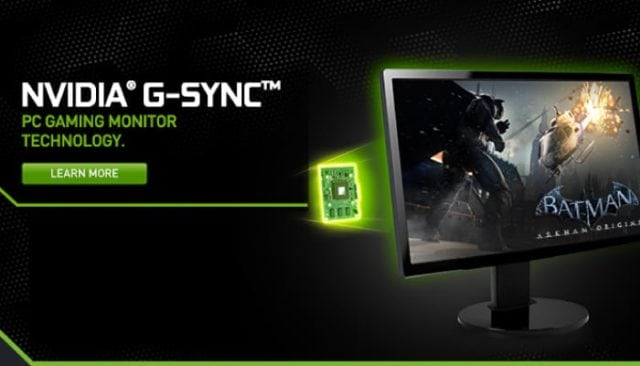Simple Answer
Also known as the vertical synchronization, V-Sync is a setting that allows you to achieve a synchronized number of frames between what your GPU renders as well as the maximum that can be displayed by your monitor. The essence of this synchronization is to eliminate screen tearing which occurs when your GPU feeds the screen more frames than it can handle.
Unless you are new to gaming, you must have come across what is known as the V-Sync in the video settings option or your graphics setting. If you do not know what it is, you are not alone as many gamers are yet to fully understand what it is and what it does, even though it can end up to be very important depending on the video output you want.
With that said, it is not necessary that making use of the setting is the best thing for one to do since it comes with both its pros and cons. More so, there are other V Sync alternatives that you can decide to choose from.
What is V-SYNC?
As pointed above, V Sync is a setting that allows you to maintain a balance between the frames that the GPU can render to your monitor and what the monitor can actually handle. Most graphics cards, most especially the high-end ones come with the strength to supply faster frames to your monitor, but unfortunately, most monitors do not have the capabilities to handle the frames as such there is the interruption in the flow of your graphics.
Not to get things wrong, the tearing occurs even in popular games and although it only lasts for split seconds, it still causes inconvenience.
What Does It Do?

It is only recently that gaming monitors are coming with 120Hz and 144Hz refresh rates with some even going as high as 240Hz. While this is not to suggest that they are bulletproof to tearing, they are much better than 60Hz refresh rates that most computer monitors have.
Because of the low refresh rates, you get to find that the in-game frames per second (FPS) sometimes get to be higher than the refresh rates of the monitors, leading to screen tearing. For a better perspective, with 60Hz refresh rate, your monitor can only get to handle 60 frames per second and if by any chance the output frames are higher than that, you may end up with screen tearing.
If you always have screen tearing, there are mostly two solutions. While the first is updating your drivers, the second is to simply turn on your V-Sync. Hence, the simple thing that the setting does is to ensure that you do not get this screen tearing. So how does it do that?
The vertical synchronization is able to eliminate tearing by simply limiting the FPS rendered by your GPU to the maximum that your monitor can handle. This means that if you are making use of a 60Hz monitor, turning on the V-Sync will ensure that your GPU does not render more than the 60 FPS that can be handled by the monitor. Without limiting the frames rendered by the GPU, it will process more than the monitor can handle and in a rush to try to meet up, the monitor will then begin to break the frames as it hastily overwrites images to create new ones as it refreshes itself.
Should I turn V-Sync On or Off?
Inasmuch as you will get smoother display after enabling the setting, it doesn’t mean that there are no problems that it can cause. Therefore it is left for you to decide on whether to use it or not, here are its advantages and disadvantages:
What are the benefits of V-Sync?
The obvious benefits of VSync as earlier noted is to ensure that the frames rendered by your GPU are synchronized with what the monitor can handle, thereby ensuring that you do not get screen tearing. Essentially, instead of working with the 90 FPS that your graphics card renders for your monitor that has only 60 HZ, it will sync both.
More so, based on the type of game you are playing, enabling the V Sync can help prevent the graphics card from overheating. You get such problems when playing games that have graphics demand that overpower the graphics processor.
What are the cons of using it?
Naturally, it will be easy for one to recommend that you make use of the setting but then, they are not as flawless as we may want them to be. One of the main problems is that you may get to experience stuttering and lag time because there are times when your GPU cannot handle the frame rate requested by the monitor. In such a scenario, the monitor will have to wait for the GPU to render the images.
See Also: 144hz Monitor For Gaming: Is It Really Worth It? Here is a Simple Answer
So the question of whether or not you should use V-Sync all depends on you, but there is no harm in first trying since it can actually work for you. For someone for whom it causes stuttering and lagging, this may even be a more serious problem as it may occur at a very critical stage in your gaming.
V-Sync Alternatives

If this doesn’t work for you, the good news is that there are other alternatives to the VSync that are even much better including the AMD’s FreeSync as well as Nvidia’s G-Sync.
FreeSync
Designed by AMD, FreeSync is designed to correct both the problems associated with VSync by ensuring that it eliminates both screen tearing and stuttering. This is done by including a feature that will allow both the monitor and the graphics card to communicate with each other thereby determining what is rendered by the Graphics card and the refresh rate of the monitor so that you only get an image on the screen at same time.
G-Sync
While only working on modules supplied by Nvidia to manufacturers of monitors, FreeSync can be found on a wider scaler option since it works on 3rd party scaler. Nevertheless, they both have similar functions even though you will not expect either a G-Sync monitor or a Nvidia monitor to work with the other graphics card brands.
How can I use it?
If you have decided to go with the V-Sync, you can simply access it from either the control panel of your graphics or the video or graphical settings of most games.

